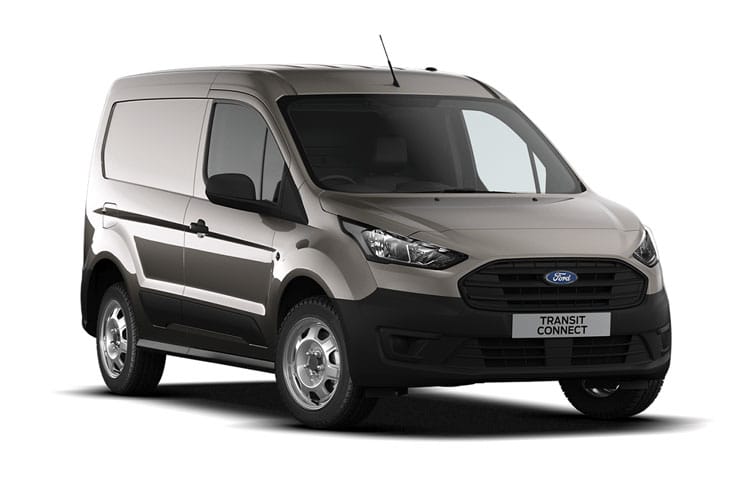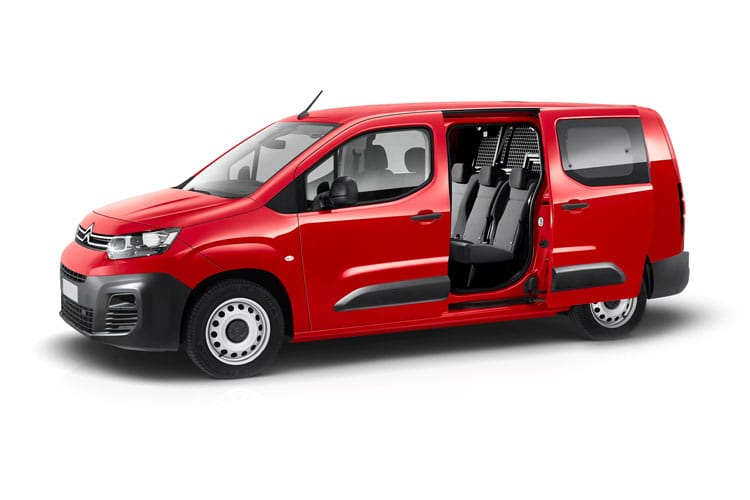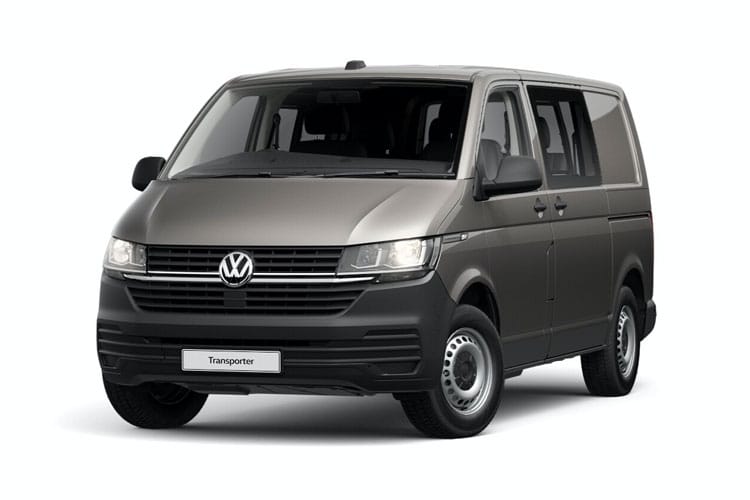 Ford Transit Connect
240 L1 Double Cab 1.5TDCi EcoBlue Leader
Ford Transit Connect
240 L1 Double Cab 1.5TDCi EcoBlue Leader
 Citroen Berlingo
Crew 1.5 BlueHDi XL 850 6speed Enterprise Pro
Citroen Berlingo
Crew 1.5 BlueHDi XL 850 6speed Enterprise Pro
 Volkswagen Transporter
T30 Short Wheel Base 2.0 TDI 150 Kombi Startline
Volkswagen Transporter
T30 Short Wheel Base 2.0 TDI 150 Kombi Startline
 Renault Trafic
Crew LL30 Blue dCi 150 Sport
Renault Trafic
Crew LL30 Blue dCi 150 Sport
For companies that need to transport not only goods but also a crew of workers to various job sites, traditional panel vans fall short in terms of passenger capacity. That’s where crew vans step in, offering a versatile solution that bridges the gap between passenger and cargo transportation needs.
A crew van is not just a vehicle; it’s a mobile workspace that can accommodate more than just the driver and a single passenger. These versatile vehicles are designed to cater to the demands of industries such as construction, groundworks, and any business that requires a team of workers on the move. They provide a balance between comfortable seating for your crew and ample cargo space for tools and equipment.
On this page, we’ll delve into the realms of crew van leasing, exploring what defines a crew van, the available seat configurations, the crucial aspect of load area space, and how crew van leasing can be a game-changer for your business.
Keep reading to discover how crew van leasing can streamline your operations and keep your team on the road with room for the whole gang.
A combi or crew van is a versatile transportation solution designed to cater to various passenger and cargo needs. Specifically, it is a type of van equipped with a second row of seats, providing the capacity to transport more passengers compared to a standard panel van, which typically accommodates only two passengers in the front seats. This extra seating arrangement makes crew vans an ideal choice for a wide range of industries, especially those that require the transportation of work teams to construction sites and other job locations.
There is also the option to remove the second row of seating to essentially turn it back into a fully fledged panel van. This flexibility allows businesses and individuals to adapt the vehicle to their changing needs, making it a practical and cost-effective solution for a wide range of requirements.
The two most common seat configurations on a crew van are five or six seats. A row of three seats is provided in the back with two or three in the front, depending on the model. This setup ensures that the crew van can accommodate either a total of five or six passengers, providing flexibility to suit various transportation needs and group sizes.
The available load area space in a crew van will vary depending on the specific make and model. Typically, crew vans are designed to offer a balance between passenger seating and cargo space. The amount of cargo space can be influenced by factors such as the van’s size, the presence of additional rear seating, and whether the rear seats can be folded or removed.
Load area space in a crew van is essential for carrying equipment, tools, supplies, and materials to job sites. It’s recommended to check the exact cargo capacity and dimensions of the crew van you’re considering for lease to ensure it meets your specific cargo requirements.
However, let us compare the Ford Transit Custom panel van against its equivalent Crew version, to get an idea of what you get in terms of seating and cargo volume.
| Features | Crew Van | Panel Van |
| Size | H1, L2 | H1, L2 |
| Max Seats | 6 | 3 |
| Cargo Volume m3 | 3.5 | 6.8 |
As the comparison highlights, the Crew Van offers advantages in terms of seating capacity, accommodating up to six passengers compared to the three in the Panel Van. However, there is a compromise on cargo volume when opting for the Crew Van configuration.
In light of this, the central query arises: what advantages does this configuration offer compared to a standard panel van?
Leasing a crew van presents numerous benefits, especially for businesses that require a versatile vehicle to meet their unique transportation needs. One key advantage lies in the flexibility where the demand for transporting both goods and a team of workers is constant but variable. This allows for adapting to changing requirements.
If you find yourself uncertain about whether your business could leverage the advantages of a crew van, we’ve outlined some examples to assist you in making an informed decision. The following businesses engage in both transporting goods and mobilising a team of workers, showcasing scenarios where a crew van can prove exceptionally beneficial:
Crew van leasing provides businesses with a flexible and cost-effective solution for their combined cargo and passenger transport needs. The process typically begins with selecting the desired make and model of the crew van, considering factors such as seating capacity, cargo space, and any specific features required for the business. Once the vehicle specifications are determined, the business and the leasing company agree on the terms of the lease, including the lease duration, mileage limits, and monthly payment amounts.
One of the key advantages of crew van leasing is that it often requires a lower upfront payment compared to purchasing a vehicle outright. The monthly lease payments cover the depreciation of the vehicle’s value over the lease term, along with any additional services or features included in the lease agreement, such as maintenance packages. At the end of the lease term, businesses typically have the option to return the van and lease a new one, purchase the van at a predetermined residual value, or explore other available options.
Leasing a crew van provides businesses with the flexibility to adapt their fleet size to changing needs, access the latest vehicle models, and minimise the financial burden associated with vehicle ownership. It’s a practical choice for businesses seeking a versatile and cost-efficient solution for transporting both goods and personnel. If this aligns with your business needs, but you still require more information, our team is ready to help. We can provide tailored leasing solutions, ensuring a seamless and efficient transportation strategy for your operations.
Crew vans are a diverse category of vehicles designed to meet the unique requirements of businesses and individuals who need to transport both passengers and cargo.
The availability of different types of crew vans for lease allows you to choose a vehicle that aligns with your specific needs and preferences. There are three main categories they come in, although specialised versions expand this category.
Here are the three versions of crew vans you can consider leasing:
Standard crew vans are the most common and versatile choice. They come in a range of sizes, including compact, mid-size, and full-size models. These vans are designed to strike a balance between passenger capacity and cargo space, making them suitable for various industries and applications. Whether you need to transport a small work team or a combination of passengers and equipment, standard crew vans provide an excellent starting point.
High roof crew vans are characterised by their taller cargo area. This additional vertical space is especially valuable when you need to transport tall equipment, tools, or items that can’t fit within the confines of a standard van. They are popular among contractors, tradespeople, and service technicians who require the extra height to carry their specialised gear.
Extended crew vans feature a longer wheelbase, resulting in more cargo space behind the rear seats. This additional length is beneficial for businesses with larger teams or those who need to transport bulkier cargo, such as construction materials or furniture. Extended crew vans offer greater flexibility for accommodating both passengers and larger loads.